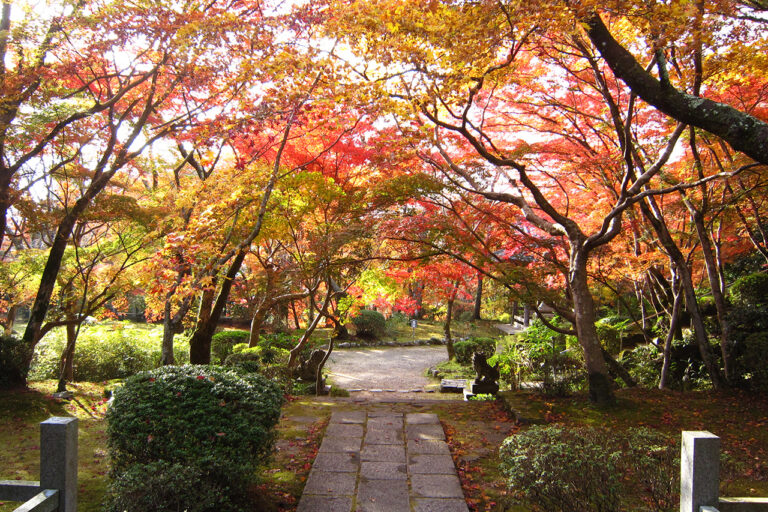
See [Shojiji Temple], known as the place where Saigyo Hoshi entered the priesthood...
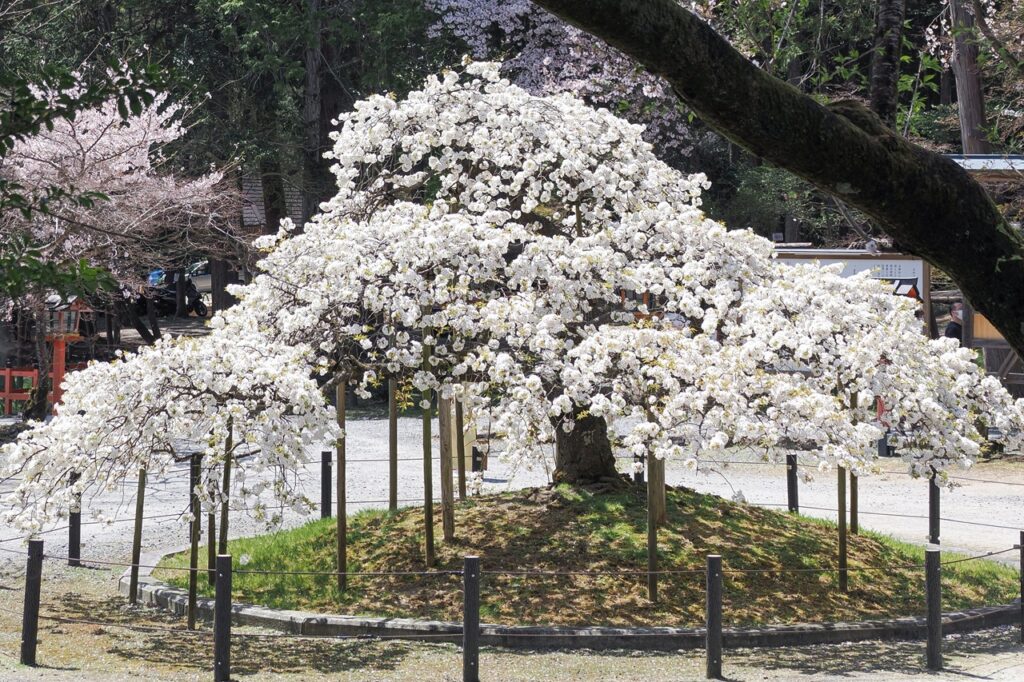

Founded in 784 (Enryaku 3). When the capital was moved from Heijo-kyo to Nagaoka-kyo in Nara, a branch of the deity of Kasuga-taisha, which was the Fujiwara clan's family deity, was invoked as the guardian deity of the new capital, and enshrined at the foot of Mount Koshio, which was the beginning of Oharano Shrine. The shrine is now known for its prestigious status as the first branch shrine among the thousands of Kasuga shrines in Japan.
In autumn, the precincts are dyed in the red of autumn leaves, and you can pass through a tunnel of brocade, and in spring, you can see the phantom Senganzakura.
Murasaki Shikibu, the author of "The Tale of Genji," is also revered as a tutelary deity, and Mt.
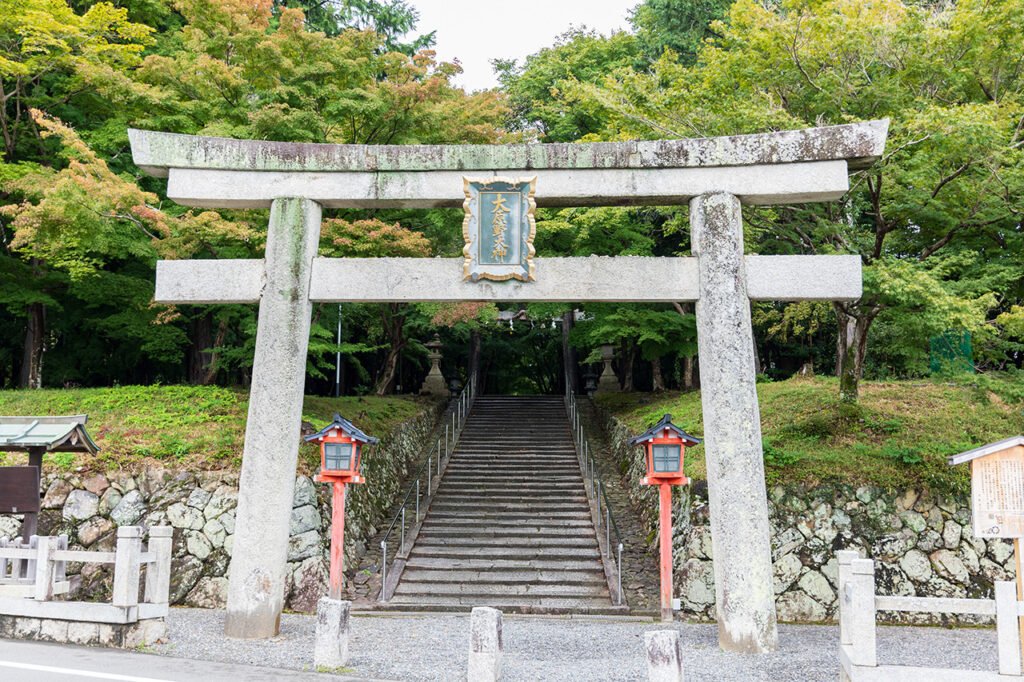

Deer, the messengers of the Oharano Shrine, can be seen in various places on the shrine grounds. Since the messenger of Kasuga-taisha Shrine, the shrine's main headquarters, is a deer, a male and a female deer statue each stand in front of the main shrine. Not only are they deer, but their cute faces are also noteworthy. Deer can also be seen in various other places, such as the deer in the hand-watering basin, in red seal books, and on good luck charms, so be sure to look for them.
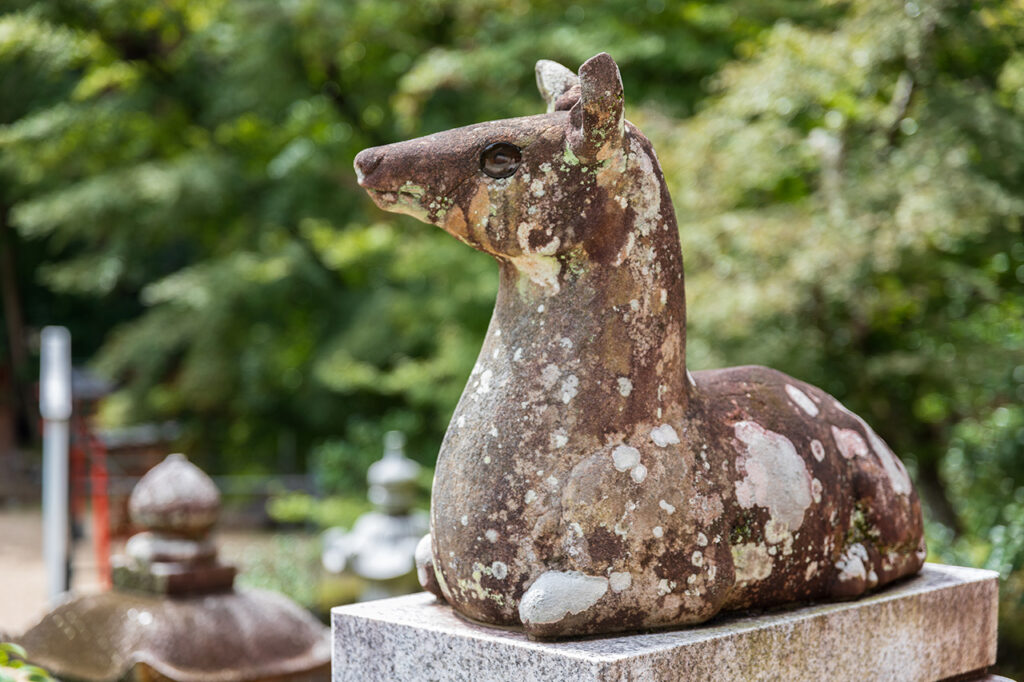

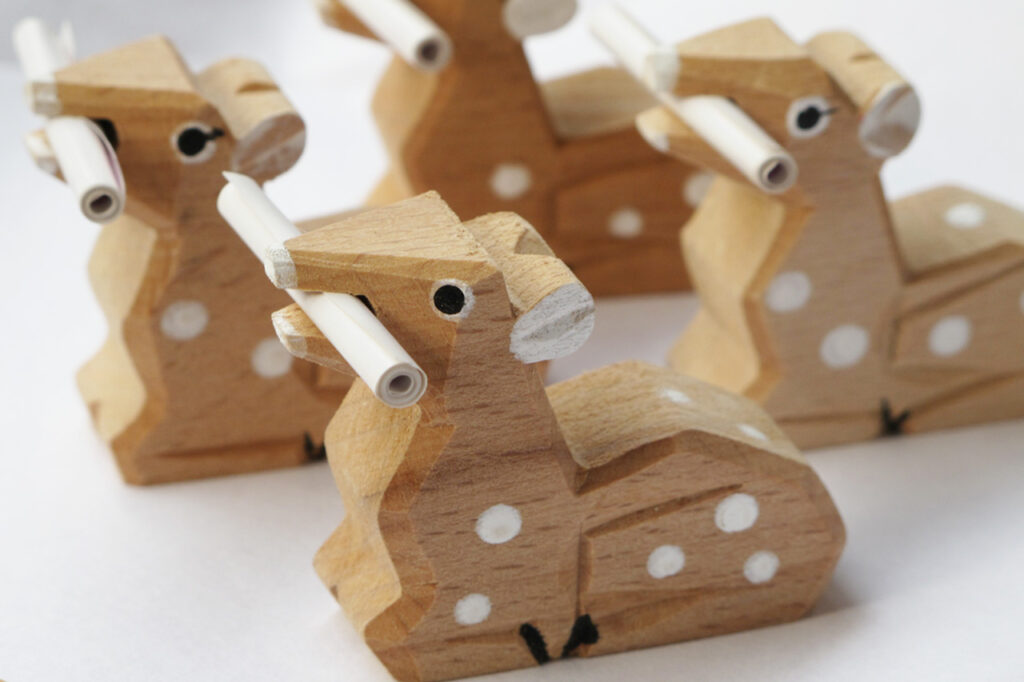
A sacred deer oracle with a scroll in its mouth carved from wood for 700 yen.

A huge votive tablet with the zodiac of the year as a motif. Many shrines are often decorated only for the New Year, but at [Oharano Shrine] you can enjoy it all year round. The pop and cute ema are works by Kusunoki and Kuwata, who graduated from Kyoto City University of Arts. It's rare that it's three-dimensional, and it's unique to this one that the animal of the zodiac and the deer, the messenger of Oharano Shrine, are drawn together.
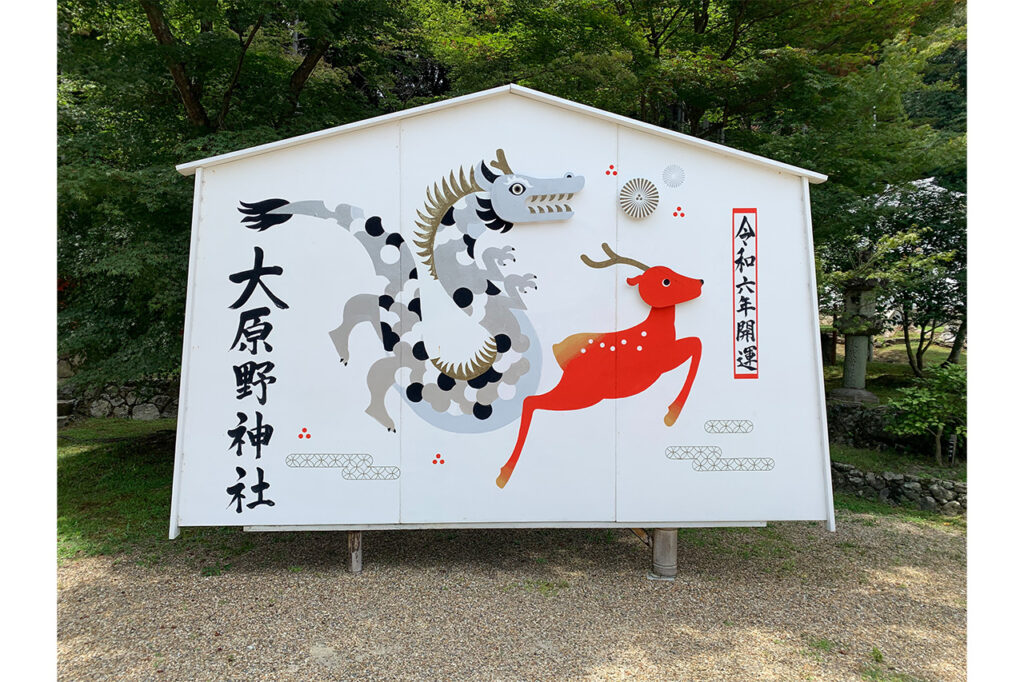
Ema in the Year of the Dragon 2024

A sacred tree about 500 years old that was broken by Typhoon No. 21 in September 2018. It is said that the lower part of the remaining sacred tree was hollow, and now it is maintained with a roof so that worshipers can enter. Experience the power of the 500-year-old tree spirit through the rare experience of entering a sacred tree.
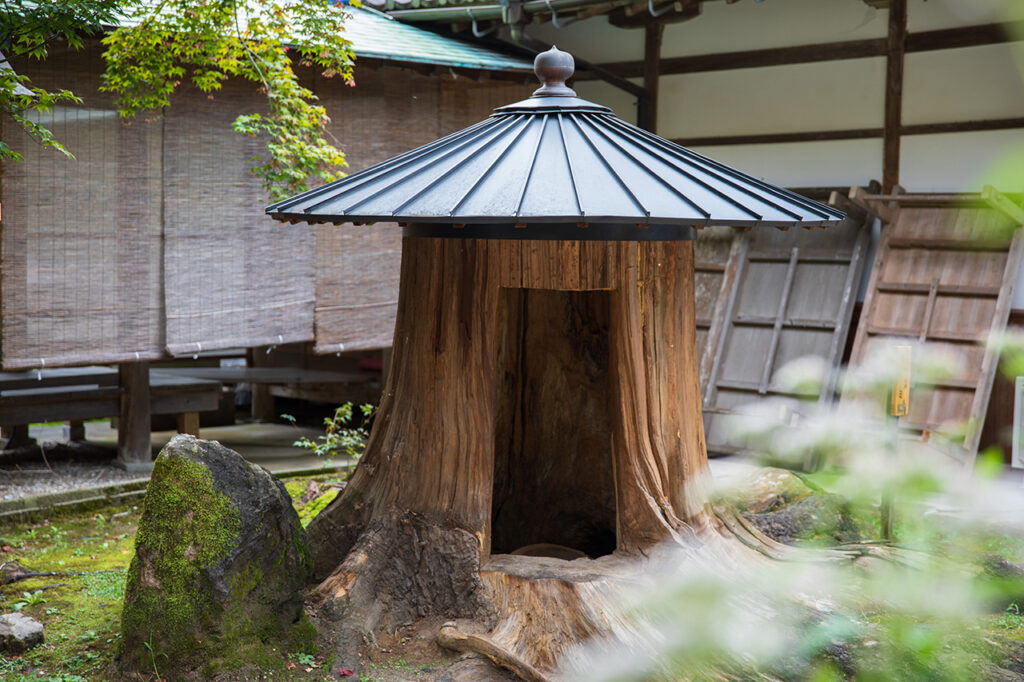

Koizawa Pond was modeled after Nara's Sarusawa Pond when it was first built. The bridge over the pond and the water lilies are so similar to Claude Monet's masterpiece "Water Lily Pond and Japanese Bridge" that it became a hot topic on social media. From June to August, you can see the scenery of water lilies blooming. In late autumn, the reflection of autumn leaves on the surface of the water peeking through the gaps between the leaves of the water lilies is also beautiful.
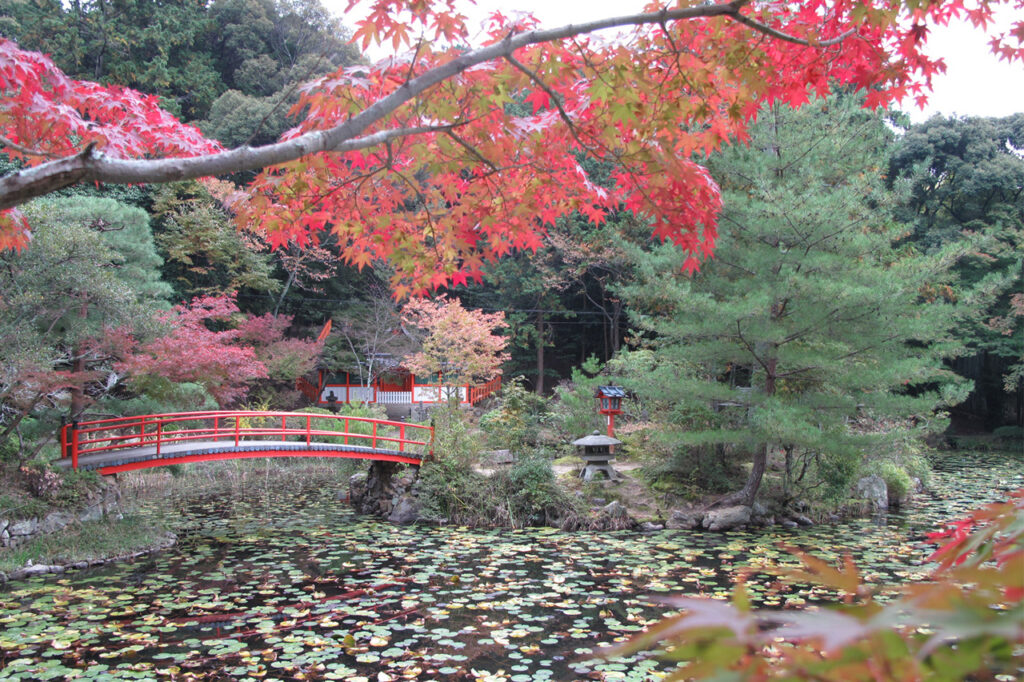

The Otagari Festival is held on the second Sunday of September every year to offer thanks for a bountiful harvest. During the festival, sumo wrestling is held to dedicate to the gods. It has been dedicated to the gods as a prayer for the co-prosperity of the region by having sumo wrestlers from the surname "Saito", which is common in the north of the shrine, and the surname "Hata", which is common in the south. It is also designated as an intangible folk cultural property of Kyoto City.
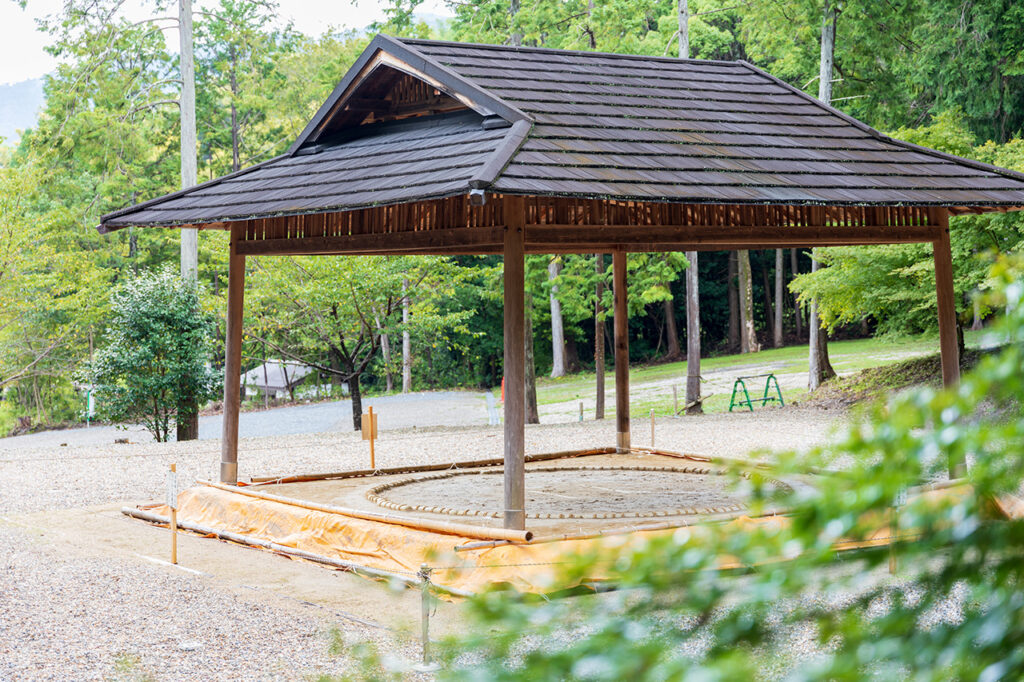

[Cherry blossom viewing information]
Best time to see: late March to early April
Visiting hours/Admission fee: Same as regular visit
[Autumn Foliage Season Information]
Best time to see/usually mid-November to early December
Visiting hours/Admission fee: Same as regular visit
Over 600 interviews per year! An order site carefully selected by the editors who knows Kyoto and Shiga.
nowOfficial LINE friend registration500 yen OFF coupon is being issued!
Distributed every Friday morning at 8:00 am! From new restaurant information to event information that we want to share with you, We deliver articles about Kyoto that are useful to know. About 20,000 people have registered.Click here to add a friend!
 News
News Feature article
Feature article Featured event
Featured event